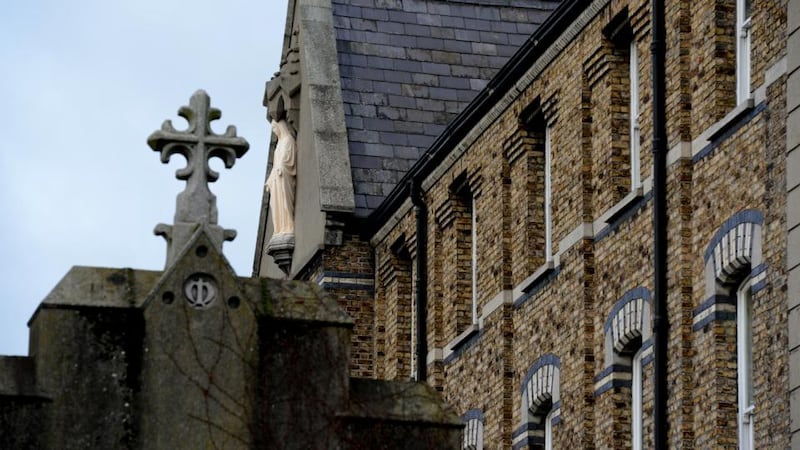Vacant or derelict religious buildings are often cited as being prime properties for conversion to housing – yet experts disagree on how many such buildings are still owned by religious orders.
The case for turning properties over to residential use is strong on the face of it, with many religious buildings situated close to amenities and currently out of use.
Cork-based designers and social activists, Jude Sherry and Frank O’Connor, found many former religious buildings boarded up and left empty in their 2020-2021 survey of derelict buildings within 2km of Cork city.
“These included churches, convents, religious shops and terraced homes. Spread across the city and within close proximity of the city, these derelict or long-term vacant buildings are in ideal locations to be converted to permanent or even temporary homes,” Sherry said.
READ MORE
Yet Gerard Gallagher, spokesman for the Association of Leaders of Missionaries and Religious of Ireland, said that while there is a perception that religious orders still own a lot of these old institutions, many of them are now owned by commercial companies.
“There is a diminishing number of properties that the religious orders own as many have already been bought by property developers,” Gallagher said.
According to architectural historian Dr Ellen Rowley, there is a “dwindling population” of elderly nuns in large convents, “some of whom are looking for the right person to trust to make the right decisions about these properties”.
Dr Rowley, who carried out research into the first conversion of a convent to long-term homeless accommodation outside of hostels, spoke about how it was managed at the international conference, Minding her Business: Women, Architecture and Design, alongside UCD school of architecture master’s student Haylee Derrickson last week.
“In the 1980s, Sr Stanislaus Kennedy (Sr Stan) became the first to study homelessness among women in Dublin, an experience that shaped her radical view that homelessness was not a permanent state of being but rather a stage in life from which people could move on, if given the support to do so,” Dr Rowley said.
As the founder of Focus Point (now Focus Ireland) Sr Stan worked with architect Gerry Cahill, who was passionate about repurposing protected structures, to redevelop the former Sisters of Mercy convent at Stanhope Street, Dublin, into 80 apartments and 10 terraced family homes facing the early 20th century neo-gothic convent.

Following the Stanhope Street project, Sr Stan got permission and funding to convert the Presentation Order’s convent at George’s Hill off Capel Street, Dublin, to 60 apartments for homeless people and later oversaw a similar project on a smaller Sisters of Charity convent on Basin Lane, as well as emergency accommodation in a former Holy Faith sisters convent in Finglas.
Currently, Focus Ireland is managing the conversion of a Dominican convent in Cabra to 60 housing units and Sophia Housing, started by Sr Jean Quinn, is working with Laois County Council to convert the derelict Presentation convent in Portlaoise to a 52-unit social housing development with community rooms and gardens.
Recalling his work with Sr Stan, Gerry Cahill said that the Stanhope Street convent was set for demolition when she asked the Sisters of Charity to donate it for housing. A new, smaller convent had already been built on the grounds to house the remaining sisters.
“She was looking for places that could accommodate predominantly single people and Stanhope Street became the first of its type to have communal facilities (kitchen, a cafe, workshops) designed around courtyards and gardens,” Cahill said. A Government grant funded the work which won the Irish Concrete Society award in 1991.
Cahill said that no building is too complex to be repurposed, repaired and refurbished when there is a good design team of architects and engineers.
“It’s a matter of gaining an understanding of the building’s constraints and restraints. This work is like urban dentistry – filling in pieces, repairing and reusing materials to comply with fire and building regulations,” Cahill said.
Reflecting on her involvement, Sr Stan acknowledged that a key factor in the success of these projects was that she was a nun and was trusted by the religious orders who donated the properties.
“It started a movement of reuse for these old convents. You have no idea the joy it brought to people from terrible circumstances, but the civil servants said at the time that it would become a squatters place,” she said.
Researchers at the school of architecture in UCD are carrying out a countrywide survey of institutional buildings, including Magdalene laundries, industrial and reform schools, mother and baby homes, county homes and psychiatric institutions. Upon completion, this inventory should throw more light on the numbers of religious buildings – regardless of who owns them – which could be converted to much needed housing in towns and cities across Ireland.
- Sign up for push alerts and have the best news, analysis and comment delivered directly to your phone
- Join The Irish Times on WhatsApp and stay up to date
- Listen to our Inside Politics podcast for the best political chat and analysis












